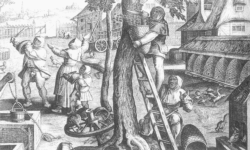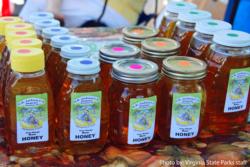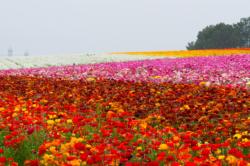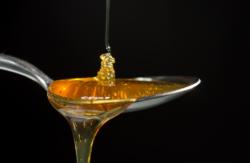History & Importance of Bees & Beekeeping
The History of Beekeeping

|
The practice of maintaining honey bee colonies is termed beekeeping or apiculture (from the Latin word for bee, apis). Beekeeping has been used since ancient times, and depictions have also been seen on the walls of the Nyuserre Ini sun temple from before 2422 BCE. In these illustrations, workers are seen blowing smoke into hives while they remove honeycombs. Sealed pots containing honey were later found in the tombs of pharaohs like King Tut (USDA). In the 1860s, Pennsylvanian John Harbison successfully brought beekeeping to the United States West Coast. After being introduced to Harbison Canyon, CA, this market greatly expanded throughout the country. |
Economic Importance

|
It is estimated that in North America around 30% of the food humans consume is produced from bee pollinated plant life. The value of pollination by bees is estimated around $16 billion in the US alone (Beespotter 2016). Bees provide crucial pollination services that support our food security, enrich our diet’s nutritional value, and are highly valued economically (Arien et al. 2015). Honey production from around 135 thousand American beekeepers caring for approximately 2.44 million colonies totaled almost 148.5 million pounds in 2007. This production was worth over $150 million (USDA, National Agricultural Statistics Service). |
Photo Credit: By Virginia State Parks staff - SK Honey for sale!Uploaded by AlbertHerring, CC BY 2.0, https://commons.wikimedia.org/w/index.php?curid=29266254
Our Environment

|
Bees, like other insects, are part of a food chain. The service of pollinating flowers is important for farming, but it also serves another essential purpose regarding improving the floral landscapes of the planet. By keeping local flowers pollinated, bees promote floral growth, and this creates attractive habitats for other insects, birds, and mammals (USDA). Insect-driven pollination and nectar gathering from large areas, contributes to a more diverse, sustainable eco-system. |
Photo Credit: Ben DiAnna
Honey Bee Products

|
Whereas crop pollination is, by far, the most important and profitable of bee services, honey is the most well known and most profitable of the direct products resulting from the efforts of honey bees. There are however, numerous other products that can be derived from beekeeping. These include honey-based products (such as candy), beeswax, pollen (as a supplement), candles, propolis (or bee glue, used in cosmetics), as well as additional bees for sale to other parties. |
